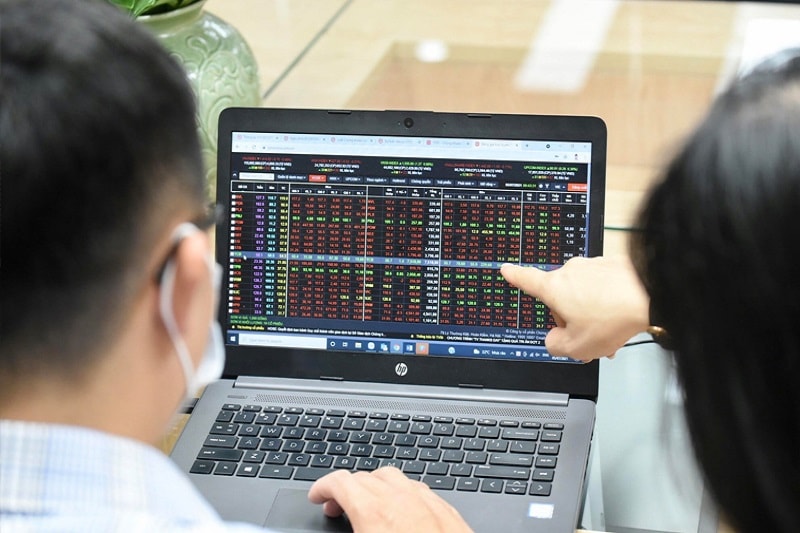Which sectors will break through with the capital-raising wave in 2025?
In 2025, a wave of capital increases among enterprises is emerging as a prominent trend, offering both opportunities and challenges for investors.
For investors in the financial markets, raising capital is a common financial activity, particularly during prosperous times. But in the past, a lot of businesses raised money but fell short of their promised growth goals. This begs the question of whether the impending capital rounds will actually add value.
Vietcombank (VCB) is regarded as a shining example of prosperity during this period. The setting of 2025–2026, according to experts, may change everything. Due to macroeconomic stability, low interest rates, good credit growth, and anticipation of the distribution of public investment funds, the stock market is beginning a recovery phase following a period of limited liquidity. These circumstances give companies a strong platform on which to aggressively acquire funds in order to support their medium- and long-term development objectives.

Competition among banks as credit room limits are lifted does not necessarily mean large banks will benefit more.
More importantly, the market is becoming increasingly selective. Investors are no longer blindly following trends; instead, they focus on the essence of each capital raise: what is the purpose, how feasible is it, and who is involved?
Currently, the banking sector is seen as the frontrunner in the 2025 capital-raising trend. To meet Basel III standards and increasingly stringent capital safety requirements, most banks are planning to increase their equity capital—mainly through stock dividend payouts or private placements to strategic partners.
Mr. Phan Nguyen Huu Phuong of DNSE Securities noted that Vietcombank (VCB) stands out as a typical success case in this wave. Its recent successful issuance helped strengthen its financial capacity and enhanced its ability to fund key infrastructure projects. As public investment is being strongly promoted by the government, banks with solid capital will play a key role in maintaining the flow of credit in the economy. VCB’s stock price has also recorded a positive increase post-issuance, reflecting investor confidence.
Additionally, other banks such as VIB, ACB, and NCB are also preparing capital-raising plans, accompanied by clear business strategies. Although bank stock prices are currently higher than in the past, stable credit outlooks and sustained profitability make this group likely market leaders in the mid-term.
Moreover, manufacturing enterprises—such as Hòa Phát (HPG)—also present successful capital-raising models. HPG raised capital to build new plants, ensured construction timelines, and brought them into operation as planned, thereby increasing capacity and business performance.
“We believe the most important thing is that capital-raising plans must come with a truly impressive business strategy for companies to attract investors. The 2025–2026 period, as the market heats up, is a good time for companies to raise capital,” Mr. Phuong emphasized.
Regarding the real estate sector, the expert noted that many property firms have begun raising capital. This year's annual general meetings could offer opportunities for businesses in this field, as they tend to be highly responsive in a warming market like the present and the year ahead.

During this phase, investors are more receptive to capital increases than during unfavorable market periods.
“Based on experience, during this phase, investors are more receptive to capital increases than in unfavorable periods such as 2022–2023. However, investors tend to favor capital raises from retained earnings over rights issues. Bonus shares or stock splits are seen as better opportunities for stock price growth compared to rights offerings, which usually require longer holding periods. This reflects typical investor sentiment.”
Not to be left out, securities firms are also unveiling large capital-raising plans. Notable examples include Rong Viet Securities (VDS), which plans to increase its capital from VND 2,400 billion to VND 3,200 billion, and Saigon – Hanoi Securities (SHS), which plans to raise its charter capital to over VND 17,000 billion.
The main motivation behind these capital raises is to expand margin lending, invest in technology, and grow proprietary trading or brokerage services. However, the key challenge is maintaining return on equity (ROE) as equity capital increases rapidly. If capital is not effectively utilized, declining profitability will make the stock less attractive to investors.
Mr. Nguyen The Minh from Yuanta Vietnam Securities recommends that, when evaluating securities stocks, investors should focus on companies whose capital-raising strategies are tied to market share growth, strong risk management capabilities, and robust research and brokerage teams. These are the key factors for maintaining high profit margins in an increasingly competitive market.
The 2025 capital-raising wave is a sign that market confidence is returning; however, today’s market is no longer easily swayed. Investors are paying greater attention to the quality behind each capital raise—from the fundraising goals and implementation plans to the leadership’s execution ability.
Overall, banking and manufacturing are the two sectors currently rated highly in terms of transforming capital into tangible business results. The securities sector is active but must be closely monitored for its ability to maintain ROE. Meanwhile, the real estate sector may recover, but it needs time to regain trust through concrete actions.
For investors, 2025 is not merely a time to look for stocks with capital-raising plans, but to choose stocks with realistic, feasible plans that create value. Only then will capital increases truly become opportunities rather than hidden risks.








